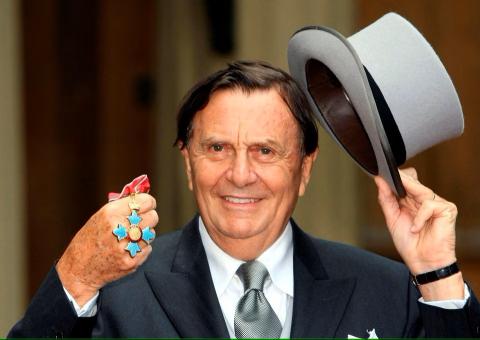
Mexicans are in mourning for Vicente Fernández, the elaborately mustachioed icon of ranchera music, whose ballads of love and loss, golden baritones and singular stage presence captured the raw emotions of a nation.
Fans flocked to his ranch in western Jalisco state, where family, friends and fellow crooners paid their final respects to the man known as “El Rey” (the King) – and often just by the diminutive “Chente.”
Cantina patrons broke into versions of his greatest hits, while a stadium full of fans at the national football final belted out an emotional rendition of Volver, Volver – a song of longing for lost love.
“His music is the Mexican sound,” said Ilán Semo, historian at the Iberoamerican University. “It’s something people have in their veins. All of their feelings and sentiments are linked to his music.”
Fernández died early Sunday morning, having battled illness in recent months after suffering a spinal cord injury during a fall. He had previously been diagnosed with Guillain-Barré syndrome, an autoimmune disease which attacks the nerves.
Such was Fernández’s stature that Andrés Manuel López Obrador ended his morning press conference on Monday by playing Volver, Volver. The president called Fernández, “a symbol of ranchera music, a popular singer known in Mexico and abroad and we are going to end the conference by listening to him”.
US President Joe Biden tweeted: “The music world has lost an icon. The music of Vicente Fernández created memories for millions … Vicente will be remembered for generations to come.”
Vicente Fernández was born 17 February 1940, in the ranching community of Huentitán el Alto. He was reputedly bit by the show-business bug after watching films starring Pedro Infante.
He learned to play guitar and sang on the streets of Guadalajara – Mexico’s mariachi heartland – before hitting the big time in the mid-1960s.
“He made ranchera music popular in the cities and beyond the traditional audiences. Then he took it abroad,” where it connected Mexican immigrants with their homeland, said Javier Garza, an editor and journalist in the city of Torreón. “Chente’s rise coincided with the growth of (Mexico’s) urban middle-class in the 70s and 80s.”
Famed for projecting an image of virility – sporting thick sideburns, a mustache and bushy eyebrows, which were dyed black until his final days – Fernández recorded more than 50 albums and starred in more than 30 films. He received a star on Hollywood’s Walk of Fame in 1998 and concluded his farewell tour in 2016.
Whether performing in big-city stadiums or small-town cockfighting rings Fernández took the stage in elaborately embroidered charro suits, cowboy boots and broad sombreros. His music won fans across Latin America and in immigrant communities north of the border.
“Ranchera is music which keeps its rural essence. That spoke to campesinos all over Latin America and gave them a positive identity,” Semo said. “The music has never been ‘Americanised’. These are still songs with patriarchal topics: macho Latin Americans, love that’s lost, the deep wounds caused by absence. But also songs of welcome and for birthdays. All of this requires an archetype who’s a classic in Mexico.”
His fame didn’t always protect against the hardships of Mexican life. Fernández’s eldest son, Vicente Jr, was kidnapped in 1998 with the captors demanding a $5m ransom and chopping off two fingers. Both Vicente Jr and another son Alejandro pursued music careers.
He is survived by his wife of 58 years, María del Refugio Abarca Villaseñor, with whom he had four children.
In his latter years, Fernández courted controversy: he refused a liver transplant in 2019 over worries the donor might be a “homosexual”, he told the TV program De Primera Mano.












